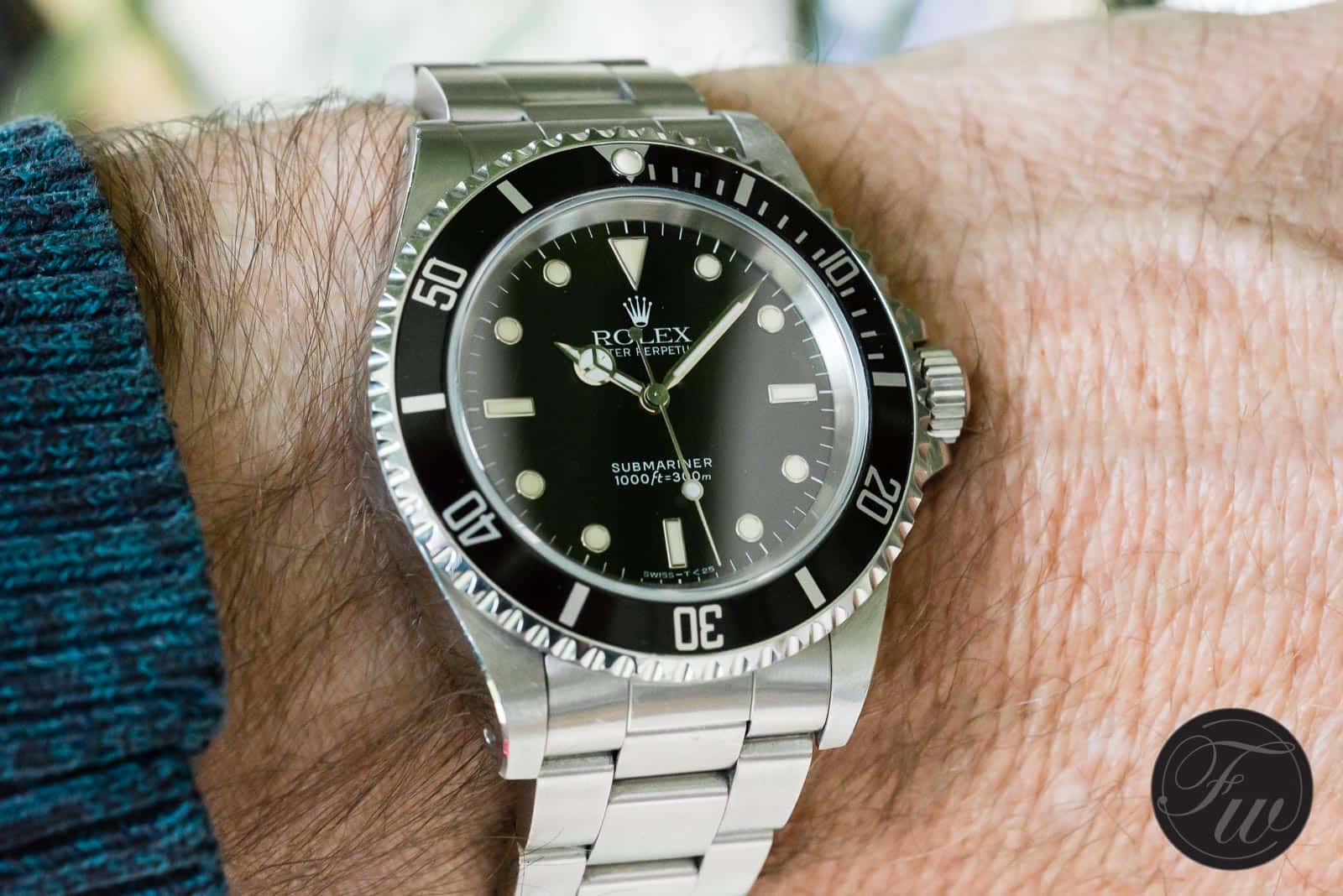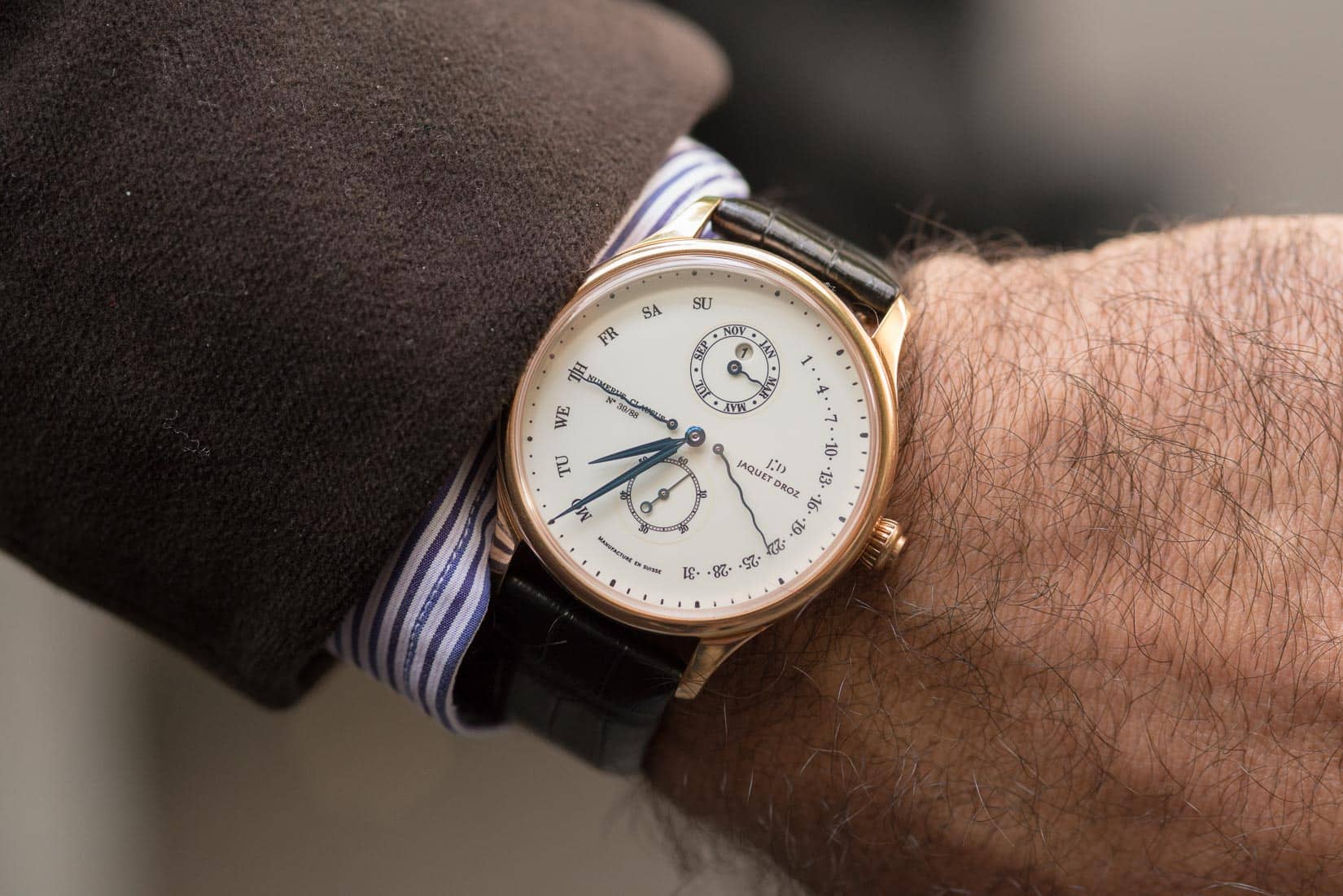Watches & Pencils #28 – Ways of Wearing Watches
Watches need a wrist. But the way you wear it on your wrist can underline or break characteristics of the watch. Often, the overall look is made of a combination of factors, implicit and explicit, not only by the watch itself. For this Watches & Pencils, I would like to dedicate an episode to the many ways you can wear a watch.
Support And Strengthen The Total Image
Of course, the way you love to wear a watch is totally personal. Some watches almost ask to wear it in a specific way though. Or, for example, a prominent wearer did expose it to us this way (e.g. movie- and rockstars). It’s almost like wearing a tie. Put it on with a tight double Windsor knot to be more formal or put it on with a quick single and loose knot to be more informal and nonchalant. I ain’t talking about huge differences here. But these are nuances that can add some extra icing to the whole impression and make a watch really “shine”. The fundament, the watch and strap itself, must always form the starting point to decide how to wear it. As a general (personal) rule I tend to wear sportive and informal watches more loose and low on the wrist. The so called dress watches I wear more tight and more high on the wrist.
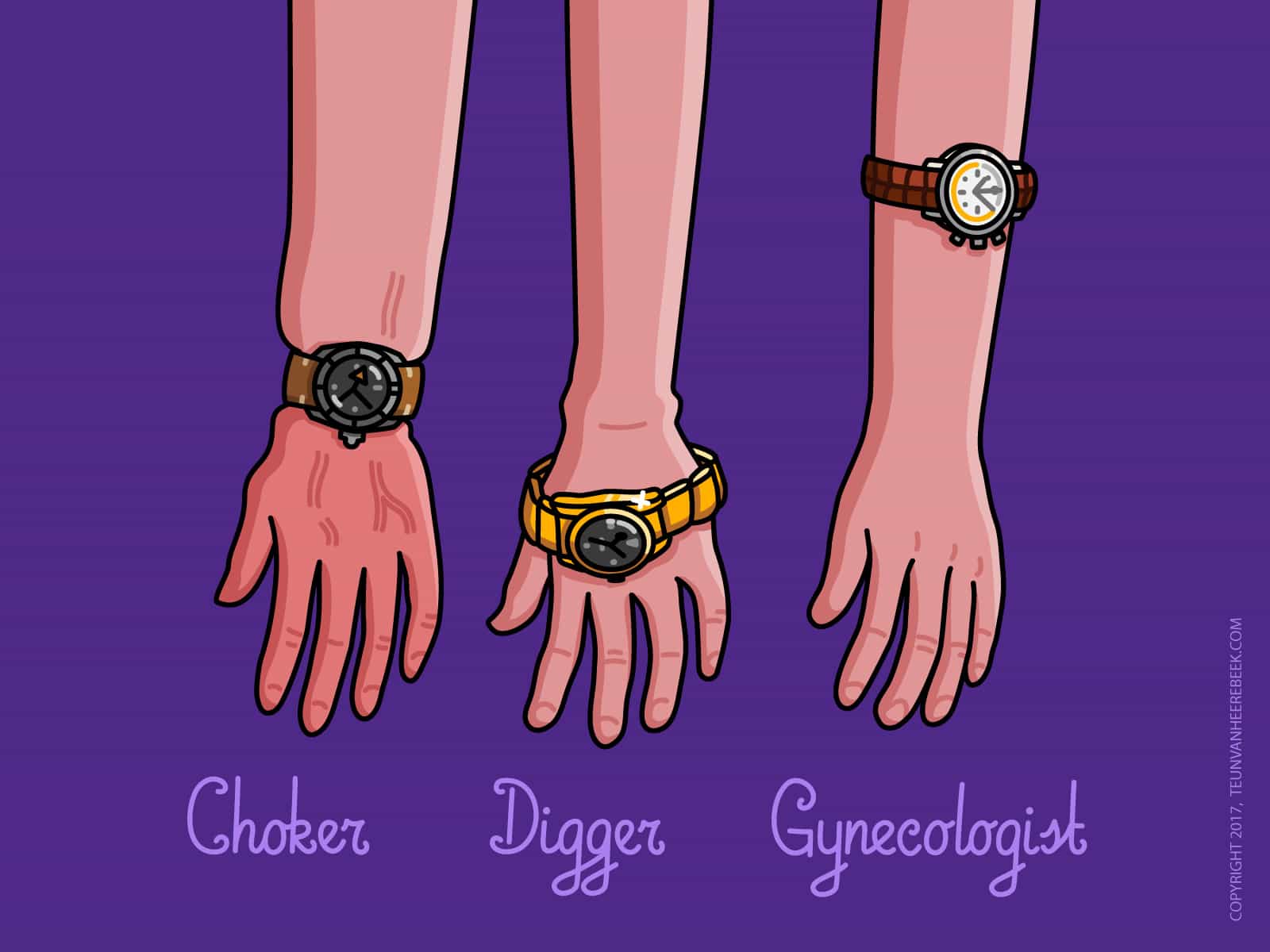
Watch Cases And Their Characteristics
Sometimes you are limited in the ways of wearing. If we talk about watch cases for example, the wearability is being dictated by:
- Lug shape and length. Curved or straight.
- Sizes of the watch. The Y-axis in particular since this axis is most bound to the wrist.
- Height of the watch. Thick watches do wobble more on the wrist in my experience.
- Case shape.
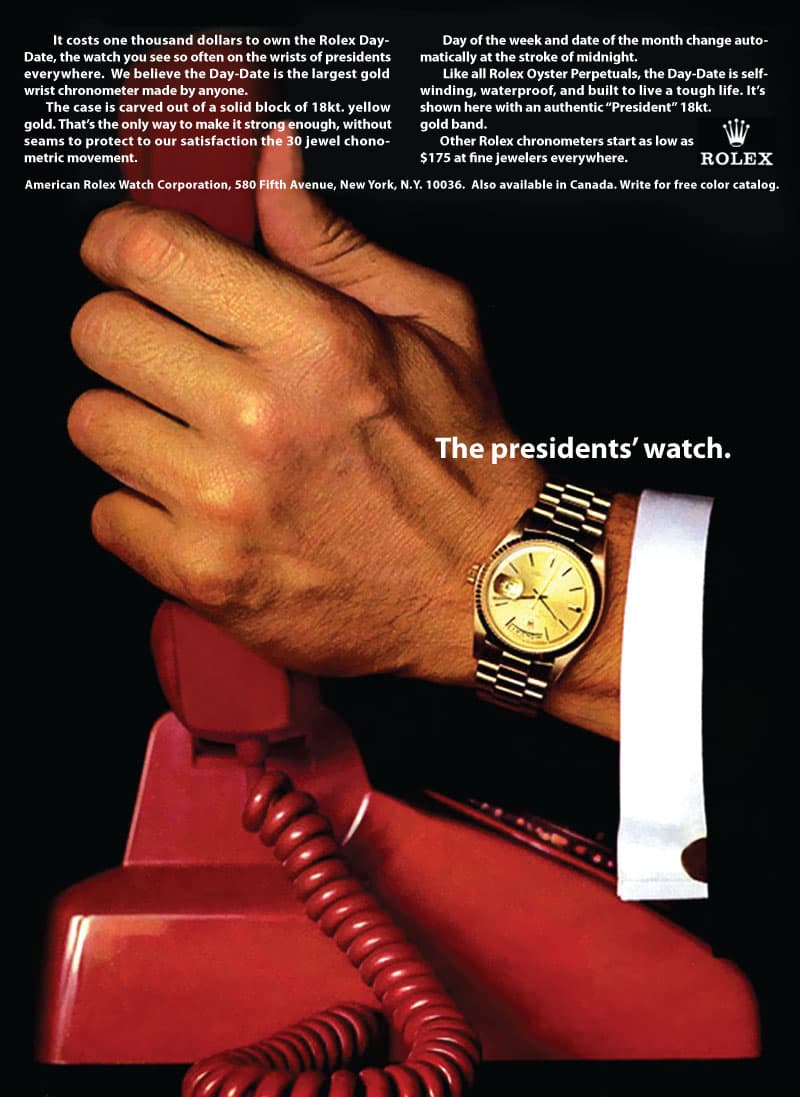
Besides famous actors etcetera, the brands themselves show us how to wear it in their ads.
Straps And Bracelets
When it comes down to straps or bracelets there are other characteristics that limit or support wearability:
- Thickness of the strap or bracelet. Thick straps and bracelets tend to be rigid and therefore wrap more loosely around the wrist.
- Number of fixing points. Straps with holes and bracelets with basic adjustment do have more limited options than a Rolex Oyster bracelet with a Glidelock clasp or a custom made strap with holes that are measured for your wrist.
- Material of the strap. Per material you also have big differences. I’ve strapped on many leather and rubber straps. There is soo much difference in quality, comfort, overall looks and even scent. We have a great feature here on Fratello Watches where we check out straps now and then. Check out our Watch Strap Reviews.
- Size of the links on a bracelet. Small and flexible links have an easy time to wrap around your wrist and follow the curves.
- Loops and buckles.
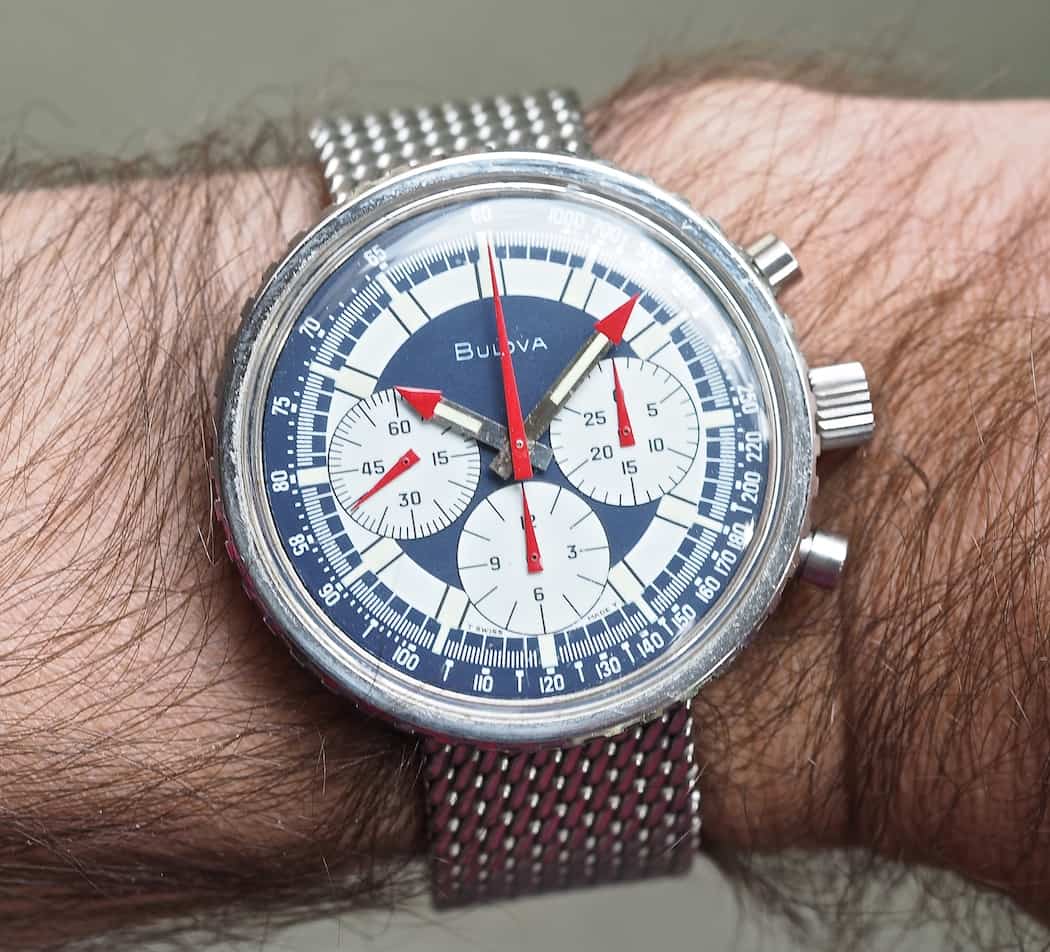
An example of a mesh bracelet, which does wrap nicely around most wrists.
Practical Versus Personal
Nowadays we almost always wear watches for fun. Not as instruments. This way we can decide how we want to wear it, based on our own comfort and taste. But if we look at professions where watches are a vital part of the equipment we see some other aspects of how to wear a watch. To sum up a few examples: diver, pilot, doctor, referee and a rally navigator. They all share common values and arguments. Most of the time in no way bound to personal preferences, but more engineered from a practical and utilitarian point of view. Of course the watch needs to sit comfortable on the wrist. The final shape and design is often more or less bound to the following targets:
- Ease of operation
- Legibility
- Waterproofness
- Handling
- Robustness
Ergo, forms follow function principle in some way. Interesting to notice that a lot of the watches and their designs are still beloved, even if it has been engineered from a more practical than aesthetic point of view. Often, the elemental aspects were designed to wear the watch in a different way. For example, the big pilots watches (or Flieger watches) were big and designed to wear over a pilot’s jacket. Nowadays the pilots watches are still big (a bit less though), but we seldom wear them over our jackets.

Laco Baumuster B, example of an WO II ‘Flieger’ with a case diameter of 55mm!
Epilogue
It’s interesting to discover individual preferences when it comes down to ways of wearing watches. As long as the decision of how to wear it is intrinsic I think it’s OK. A pre-owned or vintage watch with a bracelet that is way too short for you wrist may never be the argument to block your blood flow 🙂 What are your personal preferences and arguments? I like to read your opinion in the comments section below.
